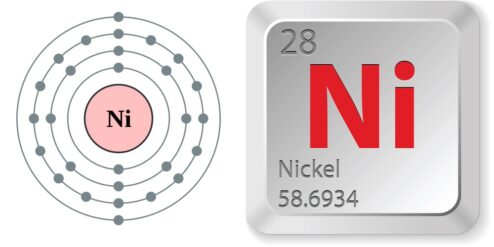Introduzione:
Nickel is a trace mineral that is naturally present in many foods. It is an essential nutrient for some plants, but not for humans. However, humans do consume nickel as part of their diet. Some foods are particularly high in nickel content, including certain types of fish, nuts, whole grains, and chocolate. On the other hand, fruits and vegetables generally have lower nickel content. However, the nickel content can vary significantly depending on various factors, such as the soil in which the food is grown and the water used for irrigation.
1. Introduction: Nickel Content in Common Foods
Nickel is present in varying amounts in most foods. Foods that are typically high in nickel include nuts and seeds, whole grains, and certain types of fish. Some foods, like chocolate and tea, can also contain higher amounts of nickel due to the processing methods used. On the other hand, fruits and vegetables generally contain lower amounts of nickel. However, the actual nickel content can vary greatly depending on various factors, including the soil and water used for growing and processing the food.
2. Understanding the Nutritional Profile of Blueberries
Blueberries are a nutrient-dense food, packed with vitamins, minerals, and antioxidants. They are particularly high in vitamin C and vitamin K, and also contain a good amount of fiber. Blueberries are also known for their high antioxidant content, which can help protect the body against damage from harmful free radicals. In terms of mineral content, blueberries contain calcium, potassium, and magnesium, among others. However, their nickel content is not typically highlighted in nutritional profiles.
3. Are Blueberries High in Nickel? A Detailed Analysis
Despite the numerous health benefits of blueberries, their nickel content is not commonly discussed. According to available research, the nickel content in blueberries is relatively low compared to other foods. However, like all plant foods, the actual nickel content can vary depending on various factors, including the soil and water used for growing the blueberries. Therefore, while blueberries are not typically considered a high-nickel food, they can contain higher amounts of nickel under certain conditions.
4. Factors Influencing Nickel Content in Blueberries
The nickel content in blueberries, like in all plant foods, can vary depending on several factors. One of the main factors is the soil in which the blueberries are grown. Soils that are high in nickel will result in blueberries with higher nickel content. Similarly, the water used for irrigation can also influence the nickel content. If the water is high in nickel, this can result in higher nickel content in the blueberries. Other factors, such as the use of fertilizers and pesticides, can also influence the nickel content.
5. Potential Health Impacts of High Nickel Consumption
While nickel is not harmful in small amounts, consuming high amounts of nickel can have negative health impacts. Some people are allergic to nickel and can experience symptoms such as skin rashes and itching, nausea, and headache when they consume foods high in nickel. Long-term exposure to high levels of nickel can also lead to more serious health problems, such as lung and nasal cancer. Therefore, while it is not necessary to completely avoid foods that contain nickel, it is important to be aware of the nickel content in the foods you eat.
6. Conclusion: Balancing Nutrition and Nickel Intake
Conclusioni:
In conclusion, while blueberries are not typically considered a high-nickel food, they can contain higher amounts of nickel depending on various factors, including the soil and water used for growing the blueberries. However, given the numerous health benefits of blueberries, they should not be avoided solely due to their potential nickel content. Instead, it is important to balance your nutrition and nickel intake, and to be aware of the nickel content in the foods you eat. If you are concerned about your nickel intake, you should consult with a healthcare professional.
Per approfondire:
- Nickel in Foods and the Diet: This article provides a comprehensive overview of the nickel content in various foods and the diet.
- Nutritional Profile of Blueberries: This article provides detailed information about the nutritional profile of blueberries.
- Nickel Allergy: This article from Mayo Clinic provides information about nickel allergy, including symptoms and treatment.
- Nickel in the Environment: This scientific article discusses the presence of nickel in the environment, including in the soil and water.
- Health Effects of Nickel: This article from the Agency for Toxic Substances and Disease Registry provides information about the potential health effects of high nickel consumption.


